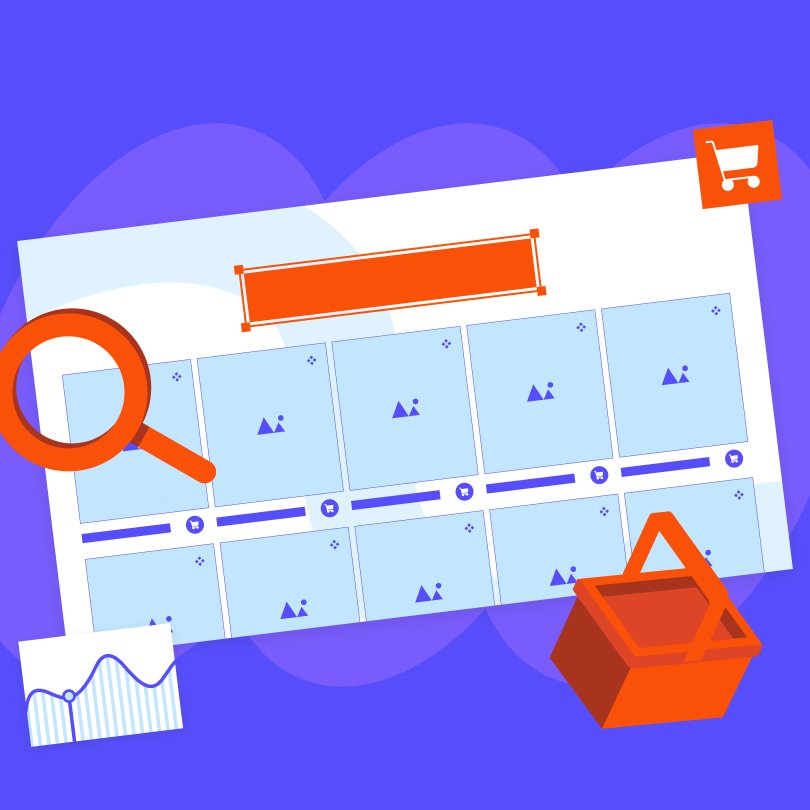Every e-commerce business owner wants to boost their sales. If you're among them, you know that ranking high in the search results is among the crucial factors.
The higher you appear in the SERPs, the more visibility your website gets, allowing more shoppers to discover your business and become customers. However, even the most experienced e-commerce owners overlook their category pages because they focus solely on product or service home pages.
That’s a critical error if you want to increase your traffic and attract more leads. Working on SEO for category pages can fix that mistake and improve your website’s discoverability.
Have we guessed it right and got you wondering how precisely to accomplish that? Then, prepare to get all the insights you need.
This guide will introduce everything you should know about SEO and e-commerce category pages. But let’s start with the basics first.
Why Category Pages Matter?
E-commerce category pages are essential in catering to search engines and users, which impact how your website ranks. They play a role in organizing content for users, ensuring they find the needed information, products, and services.
On the flip side, category pages help with ranking and indexing. That allows search engines to crawl and read your website content.
Without that, web crawlers may fail to understand the meaning and connection between different pieces of information.
Plus, category pages use internal links to improve the content ranking. That explains why stats show that category pages outperform product pages. For instance, they have 413 percent more estimated traffic and 19 percent higher ranking keywords.
Overall, the following are the most common benefits of SEO e-commerce category pages:
- Increased Visibility: SEO elevates the visibility of your category pages, ensuring they rank higher in search results and draw more organic traffic.
- Targeted Keyword Ranking: Optimization of category pages strategically targets relevant keywords, attracting users actively seeking products or content within those categories.
- Enhanced User Experience: SEO-driven improvements like faster load times and mobile responsiveness enhance user experience, positively impacting both rankings and customer satisfaction.
- Competitive Edge: Effective SEO for category pages gives you a competitive edge compared to competitors who may not prioritize SEO, helping you capture market share and outperform rivals.
- Long-Term Growth: SEO efforts contribute to sustainable organic traffic growth, providing a reliable source of visitors and potential customers over time.
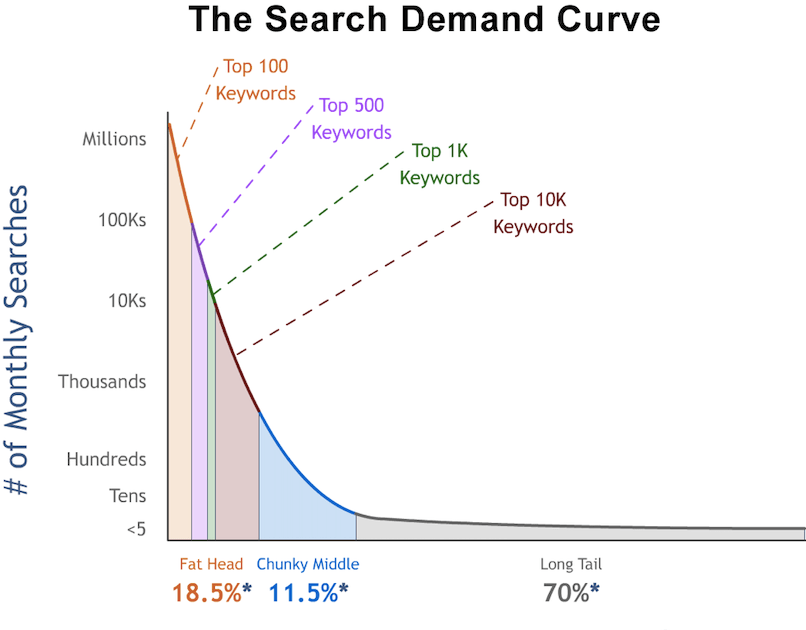
Types of Category Pages
Although some e-commerce businesses simplify their category types into two main types—Category Listing Pages (CLP) and Product Listing Pages (PLP)—the difference can be more nuanced and diverse.
Here’s the more usual scope:
Product Category Pages
You can organize your pages into specific types or product lines to differentiate and highlight them. They allow customers to browse and explore a wide range of related products, making finding relevant and interesting items easier.
Seasonal or Occasion-Based Category Pages
As season-, holiday-, or event-specific pages, they help you show unique, seasonal, or limited items. Thanks to that, they feature products tailored to the time of year or special occasions, such as Valentine’s Day or Christmas, helping customers find what they need quickly.
For instance, “Holiday Gifts” and “Back-to-School Essentials” are some of the typical names of these pages.
Brand-Specific Category Pages
Brand-specific category pages showcase products exclusively from a particular brand or manufacturer. As such, they cater to customers with brand preferences who want to explore all offerings from a specific company or designer.
Customized or Personalized Category Pages
These dynamic category pages leverage customer data and preferences to provide personalized recommendations. They suggest products based on individual user behavior, past purchases, or browsing history, offering a tailored shopping experience.
But regardless of the type, you should learn how to optimize them.
E-Commerce Category Pages Best Practices
If you want your company to grow, take actionable steps to improve the SEO of your e-commerce category pages. As a result, you will benefit from increased visibility in SERPs, higher conversion rates, and quality sales.
Keep reading to discover the best strategies for SEO e-commerce category pages.
Create SEO Optimized Category Pages
The best way to boost your on-page SEO is to choose the keywords wisely. Research rankings, check your competition, and find the most relevant terms for your products and services.
Add these keywords to the title and use them meaningfully and multiple times throughout the category page.
Pay attention to whether the on-page organization and navigation are smooth and if you’re using meta tags. Simple yet effective headings and subheadings will guide your visitors, and internal links will help them discover more items and services.
Don’t forget the page speed optimization. You don’t want to lose potential customers because your company website is loading too long.
Make the most of social media and similar platforms when promoting your brand. Present it with clear and compelling posts, pictures, and videos.
Organize Your URL Structure Effectively
Ensuring Google indexes your category pages is often challenging. However, building a well-structured hierarchy should get you there.
It makes it more likely for search engines to detect and understand your website’s pages and enhance UX design and usability. These factors are essential for high customer satisfaction.
Moreover, failing to create a good e-commerce URL structure might cause Google bots to skip your content, preventing crawling. You can avoid that by assigning a unique URL to each page within paginated search results.
Descriptive yet concise wording contributes to Google’s understanding of your category pages. Also, avoid pages containing the same text and media.
Optimize Title Tags and Meta Descriptions
Help your e-commerce website appear higher in search results by writing effective title tags. They’re crucial for search engines to understand the purpose and title of your pages.
The most important elements of a quality title tag are relevance, length (under 60 characters), and use of proper keywords. The content itself should also include adequate terms and phrases.
Don’t forget to write meta descriptions that summarize your category page effectively, allowing search bots to understand them and encouraging potential visitors to explore your website.
Besides, meta descriptions should be under 155 characters and include targeted keywords. They might need a refresh occasionally, so remember to keep them updated.
Create Compelling Copy
Category pages don’t allow adding too much text; every word should have its purpose and contribute to your SEO efforts. Doing so is often critical for a successful e-commerce business.
Prevent spelling and grammatical mistakes at all costs, as they may leave an impression of a poor-quality store and lack of effort. Be brief but on point and use relevant images to reinforce your copy.
Everything you write should align with the brand’s style while resonating with your target audience. And the copy must incorporate easy-to-understand and compelling CTAs.
Write gripping descriptions and headlines, and if it’s a product-oriented store, include measurements, ingredients, colors, and dimensions to bring every item closer to your customers.
Include Informative FAQs
Even though the copy shouldn’t leave your clients with doubts, they will likely have additional questions. Use FAQs to respond to the most common queries, a practice that speaks of your excellent customer service.
FAQ page shows people you’re a credible and trustworthy e-commerce store that knows its clients and industry. That can also boost your conversions, as people love having comprehensive information for making an informed decision.
Optimize Your Layout
Implement a consistent and appealing design across all category pages to reinforce your brand’s style. Start with a simple, cohesive color scheme and stick to it.
The same applies to navigation headers and footers. Use the same fonts across category pages and organize products logically and uniformly.
Every page should contain CTAs and product descriptions with relevant keywords, resulting in better e-commerce SEO.
Foster Stellar UX
Regardless of your industry, UX is paramount and determines your store’s success. Lift it to a higher level with the following strategies:
- Remove unnecessary images and ensure swift page loading.
- Provide clear sections with informative headings and subheadings.
- Implement responsive design to make your e-commerce story accessible and mobile-friendly.
Use Relevant Images
Like copy, visuals should be high-quality, informative, and memorable. Moreover, they should be clear, include details, and align with your brand’s storytelling and context.
That way, they can convince customers to continue exploring and, ultimately, buy your products. And since people typically pay more attention to visuals than words, the images should be inclusive and diverse.
Examples of Outstanding SEO Optimization on E-commerce Category Pages
The theory will only get you so far, but seeing how others SEO optimized their e-commerce category will activate your creative energy. Here are three inspirative examples.
Etsy
Etsy’s SEO optimization on e-commerce category pages is effective thanks to detailed product listings, user-generated content, clear structure, cross-linking, mobile-friendliness, and keyword research. That all helps enhance search engine visibility and user experience.
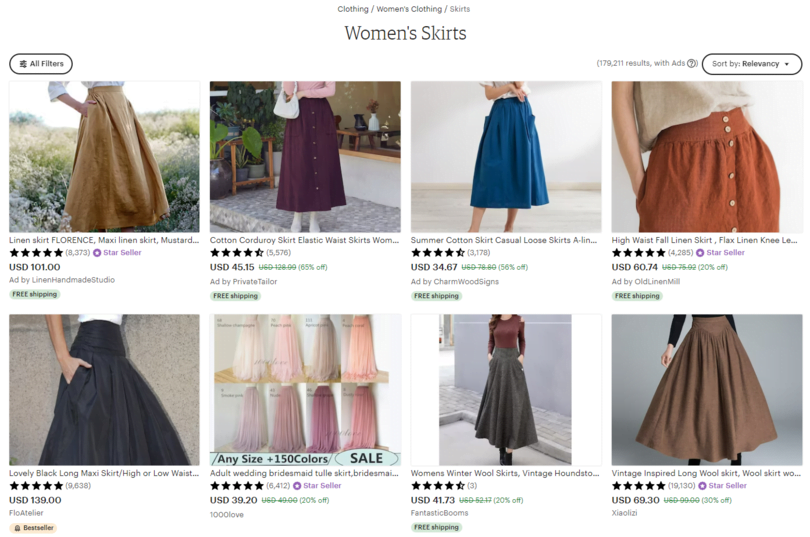
Kohl’s
Kohl’s excels in SEO for its category pages through meticulous product listings, clear site structure, and effective keyword strategies, resulting in improved online discoverability and user-friendly browsing.
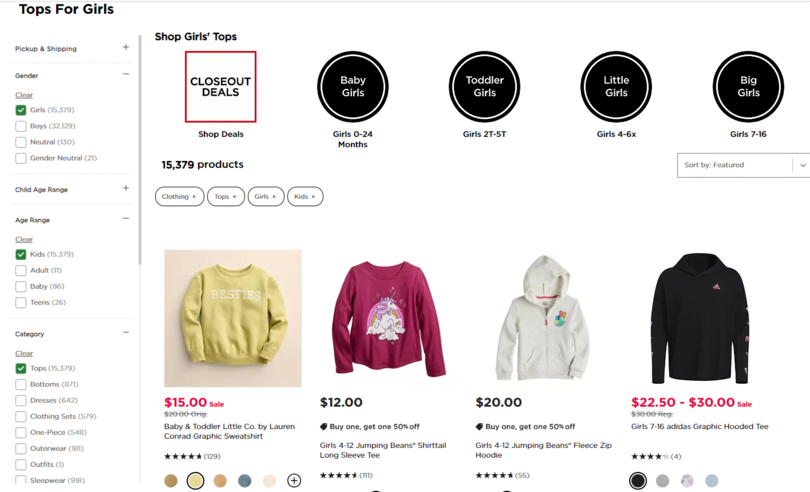
H&M
This world-renowned brand has a consistent, straightforward layout, followed by high-quality photos of diverse models. Besides, users can easily navigate the website as every section is clear, and each offering belongs to the right category.
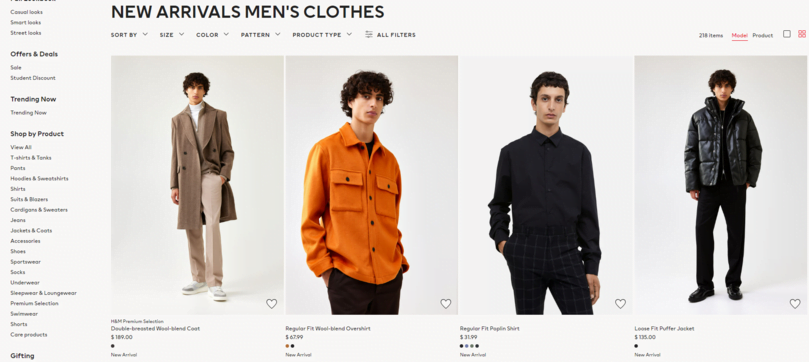
Final Thoughts
Implement our SEO tips for e-commerce category pages to increase the odds of your website appearing higher in search results. Using relevant keywords, meta descriptions, title tags, and high-quality visuals will also help you attract more leads and gain loyal customers.
But if you want to scale your business and boost traffic and conversions, consider collaborating with SEO professionals. These efforts will help you yield better results and increase your store’s visibility in the competitive e-commerce world.
